 Palo Alto Stanford Heritage
Palo Alto Stanford Heritage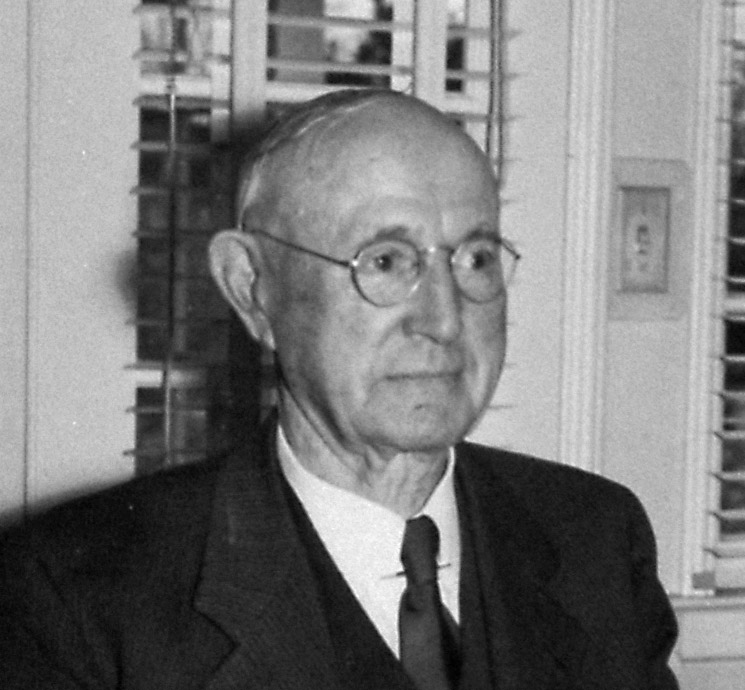 |
The following is from the Spring 2002 PAST Newsletter:
Six of the houses we have identified as circa 1902 were built by Gustav Laumeister, one of the first contractors in this area. He helped plant small American flags for the first auction sale of lots in the new town of University Park. Gustav was the son of John Anton Laumeister, who came to the U.S. from the Bavarian town of Aschaffenburg, a city situated close to the heavily forested Spessart mountains. John Laumeister joined the 1849 Argonauts and came to San Francisco where he and his brother Frank started the Pacific Flour Mills. He later moved to San Jose where his son Gustav and two daughters were born. He encouraged his son to go to the University of California, but Gustav instead began working at an early age as a builder in Alameda. He also worked in the Monterey/Carmel area and then moved to Menlo Park in the early 1880’s. He helped construct the old winery on the Stanford property, and was on hand after the 1906 earthquake to help with much of the rebuilding of the campus. By this time he had developed quite a lucrative building trade in the new city of Palo Alto.
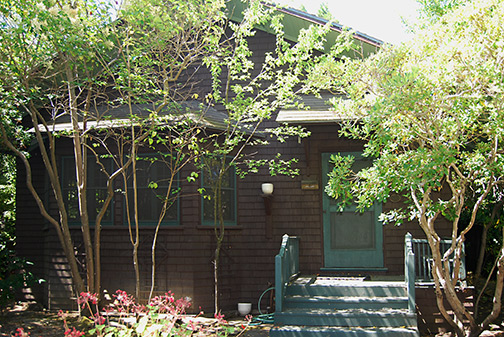 |
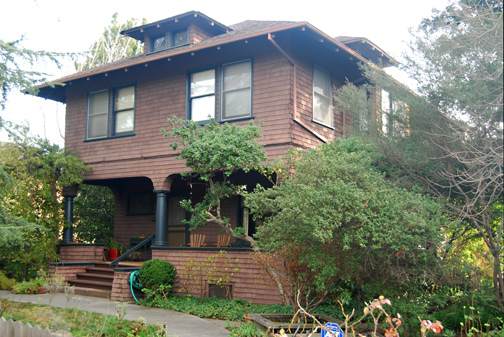 |
| 1100 Bryant Street | 308 Lincoln Avenue |
According to the AAUW Professorville pamphlet, Mrs. William A. Kimball had Laumeister build several homes in this early period. Mrs. Kimball was a Civil War widow who was drawn to the area because of the educational possibilities for her two sons. She evidently made a practice of moving into a house while she supervised the building of the next one. One of the houses Laumeister built for her in 1902 was the rustic redwood cottage at 1100 Bryant. Among the most charming houses in the immediate neighborhood, it is noted for its English garden and the attractive hedge surrounding the house. Descendants of Mrs. Kimball lived in this house until 1970, though in the early years the house was often rented. Dr. Clelia Mosher lived there from 1903 to 1907. An 1894 Stanford graduate, she obtained a medical degree from Johns Hopkins, returned to Palo Alto to practice medicine, and served as a member of the Stanford faculty from 1920 to 1928.
The house at 1100 Bryant Street was built in the dark wood Shingle style, also popular at the time in Berkeley and Pasadena. Bernard Maybeck, the noted Berkeley architect and a proponent of this style, had designed the home known as the Sunbonnet house on the opposite corner at 1061 Bryant in 1899. A second house built by Laumeister in 1902 for Mrs. Kimball was at 308 Lincoln, across the street from her cottage. This two-story residence is larger and has many Colonial Revival features, but continues the same Shingle style theme, with its use of redwood shingles and redwood interior paneling and beams. Something about the nature of many of Laumeister’s homes makes one think of a Bavarian chalet, perhaps a legacy from his family’s background. The first occupant of the house was Edwin Duryea, a young civil engineer from Cornell, who had moved here with his family. He was one of the co-founders of Palo Alto’s water district and also served as councilman and vice-mayor. John Charles Lounsbury Fish bought the house in 1920. Fish, who joined the Stanford faculty in 1893, became internationally known in the field of engineering economics.
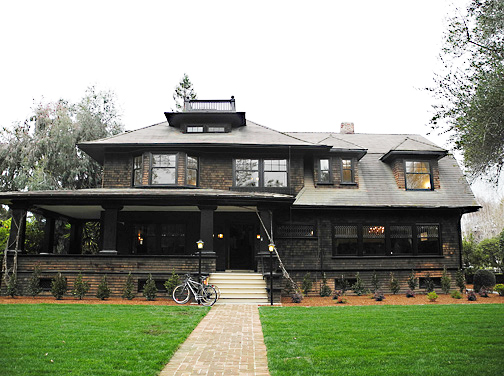 |
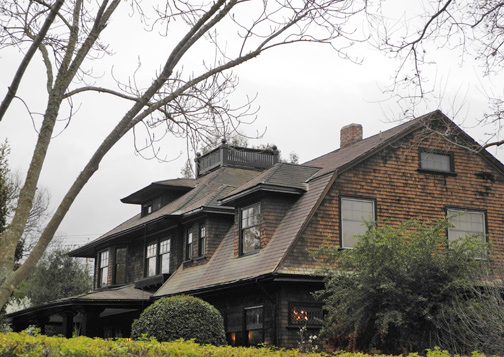 |
Also in 1902, Laumeister was finishing the large Fowler mansion at 221 Kingsley. Of his houses still standing from the period, this was certainly the grandest. The large two-story dark brown shingled house has a dormered gambrel roof, a widow’s walk, and a lovely wooden gate guarding the front walk. According to McAlester’s A Field Guide to America’s Historic Neighborhoods and Museum Houses: the Western States:
Throughout Professorville, you will find many front yards enclosed with low hedges or short wooden fences and entered through front garden gates. It is not certain when this practice began. Some gates are constructed of natural wood with a small roof above, a favored First Bay Tradition landscape element (and one that had been actively promoted by Gustav Stickley’s magazine, the Craftsman). The garden gate at 221 Kingsley Avenue....is an excellent example.
Mrs. Fowler, the widow of a Spanish American War officer, had the house built for her son Frederick, who was attending Stanford. He later lived in the home with his wife Elsie, the daughter of Stanford’s second president, John Casper Branner.
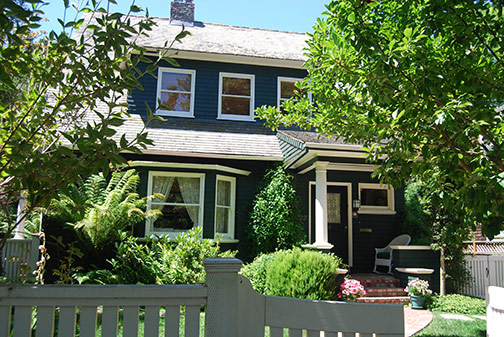 |
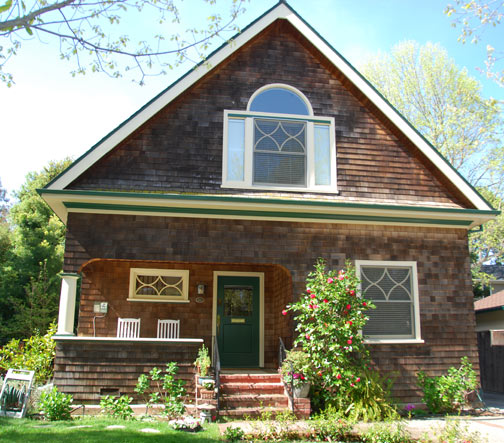 |
| 1022 Waverley Street | 1020 Waverley Street (1900) |
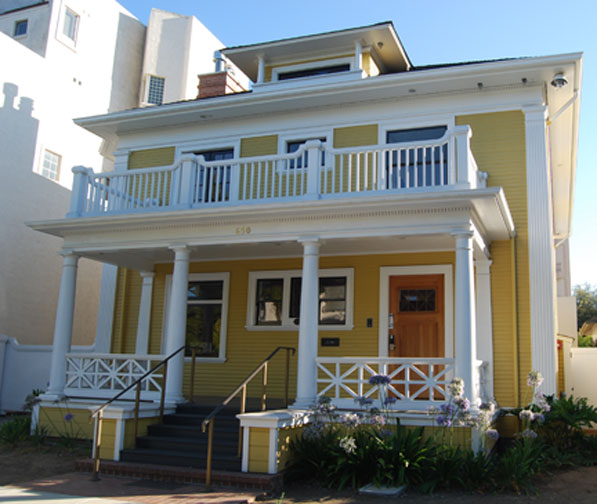 |
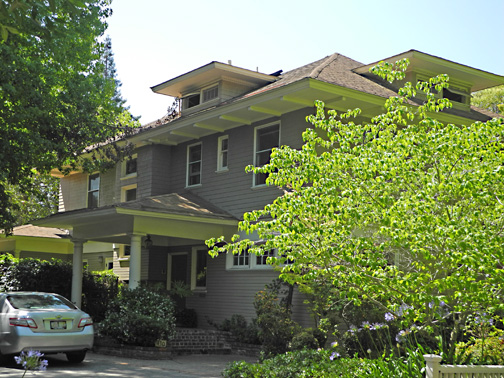 |
| 650 Waverley Street (second-story railing is new) | 430 Kingsley Avenue |
Laumeister built two houses on Waverley in 1902, a Craftsman-style house for Mrs. Emma Pleasants at 1022 Waverley (adjacent to 1020 Waverley, which he had built in 1900) and 650 Waverley built for Mrs. Harriet Woods. His sixth house is the Colonial Revival home at 430 Kingsley. The horizontal emphasis of the siding, and wide extension of the roof lines remind one of the Prairie style. This house was built by Laumeister for Professors Albert W. Smith and Mary Roberts Smith. They wrote the Stanford hymn (he wrote the music, she wrote the lyrics), “From the foothills to the bay...Hail, Stanford, Hail!” The Smiths previously lived at 1146 Waverley, which was built for them in 1893.
Gustav Laumeister would continue to construct houses in the neighborhood, including several more on Lincoln and Ramona. He also built some of the early office buildings on University Avenue, Castilleja School (attended by one of his daughters), and was responsible for nearly 100 houses in Palo Alto. His second wife, Mabel, was the daughter of Thomas Seale, who once owned all of the land occupied by the original town. Laumeister helped lay out the Seale tract. He also owned a considerable amount of property in what is now East Palo Alto, which he at one time thought of developing as Palo Alto’s waterfront. He was an avid mountaineer (a true Bavarian!) and loved motor cars. He was one of the founders of the Palo Alto Historical Association and was active in many other civic organizations. He worked in the building trade and as a real estate developer for 63 years and died at the age of 90 in 1955.
Professorville pamphlet (AAUW)
Gone Tomorrow (AAUW, 1971)
City of Palo Alto Historic Buildings Inventory (1982)
Palo Alto Community Book, Guy Miller (1952).
History of Palo Alto, Dallas England Wood (1939)
Palo Alto Times (1/2/03, 1/28/48, 1/24/55)
San Francisco Call Bulletin (12/16/1890)
Historic Preservation Ordinance Protected Properties List (12/10/00)
Nomination form for National Register of Historic Places—Professorville Historic District (1971)
A Field Guide to America’s Historic Neighborhoods and Museum Houses: the Western States, Virginia and Lee McAlester (1998).
Gustav Laumeister Houses houses listed on the Historic Inventory with links to posted details:
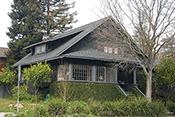 |
301 Addison Avenue | 1901 |
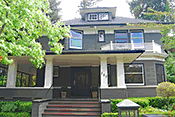 |
737 Bryant Street | 1903 |
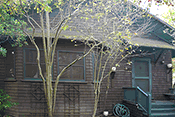 |
1100 Bryant Street | 1902 |
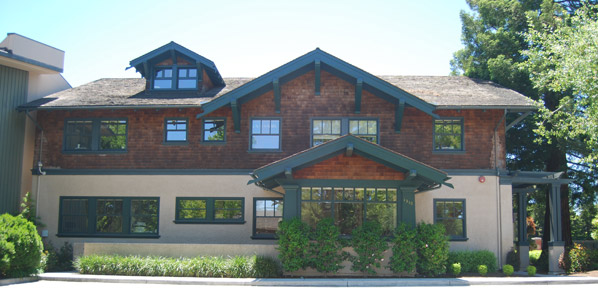 |
1310 Bryant Street | 1910 |
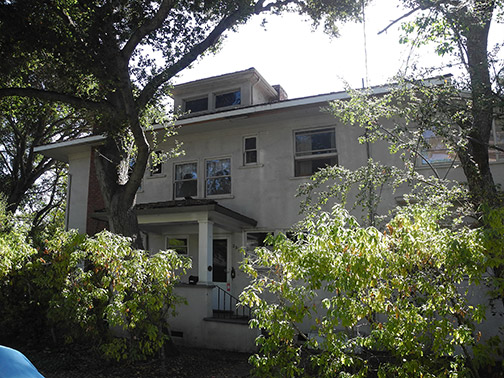 |
281 Embarcadero Road | Possible Laumeister |
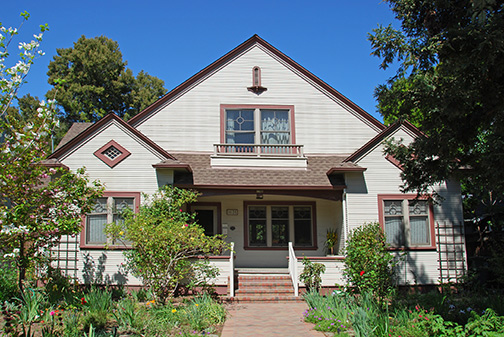 |
1035 Emerson Street | 1904 |
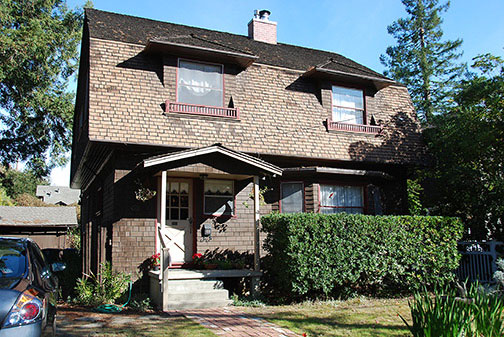 |
1111 Emerson Street | 1909 |
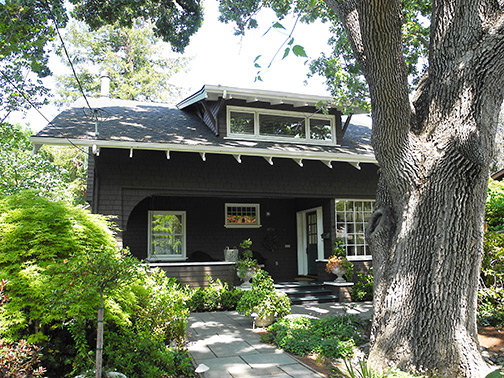 |
1129 Emerson Street | 1907/08 |
 |
430 Kingsley Avenue | 1902 |
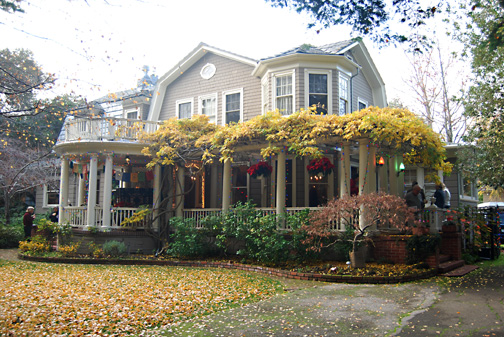 |
433 Kingsley Avenue | 1903 remodel |
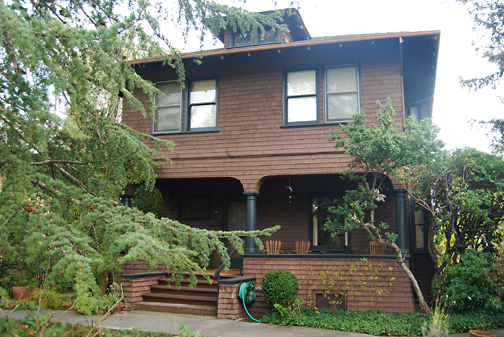 |
308 Lincoln Avenue | 1902 |
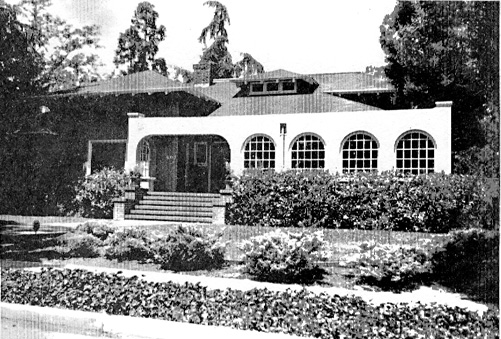 |
401 Lowell Avenue | 1908 |
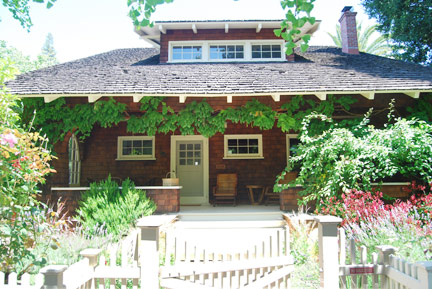 |
1001 Ramona Street | 1908 |
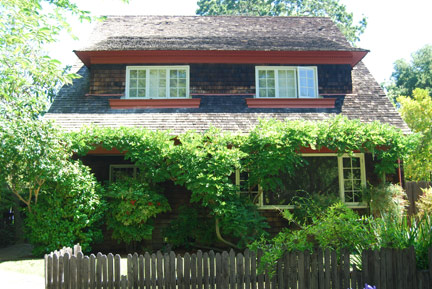 |
1103 Ramona Street | 1901 |
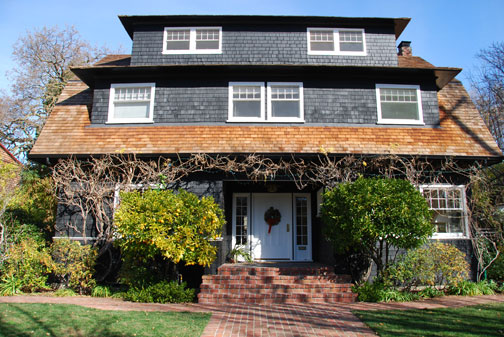 |
1115 Ramona Street | 1903 |
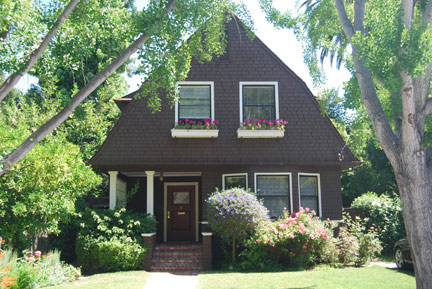 |
1139 Ramona Street | 1903 |
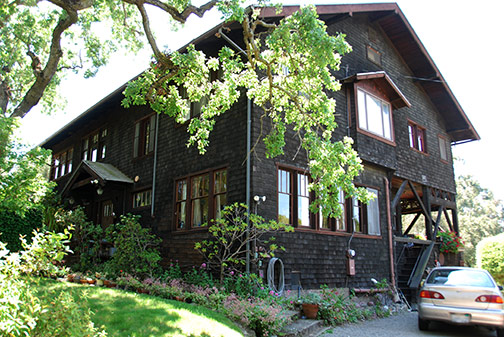 |
756 Santa Ynez, Stanford | 1909 |
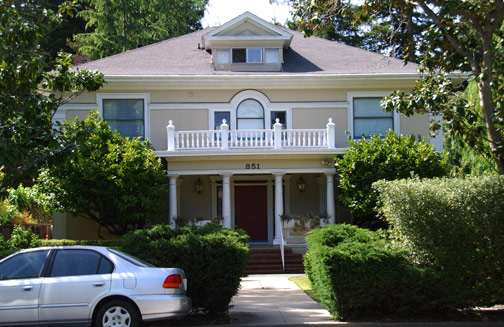 |
851 University Avenue | 1903 |
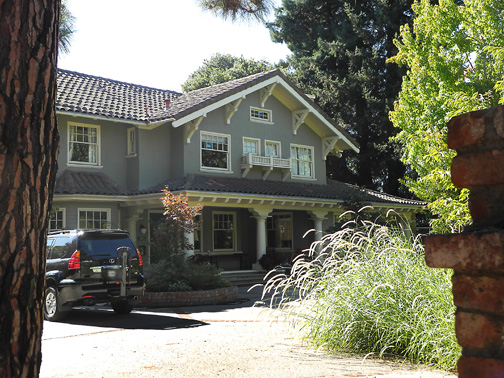 |
950 University Avenue | 1908 |
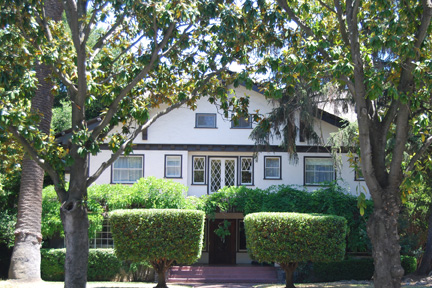 |
970 University Avenue | 1909 |
 |
1020 Waverley tree | 1900 |
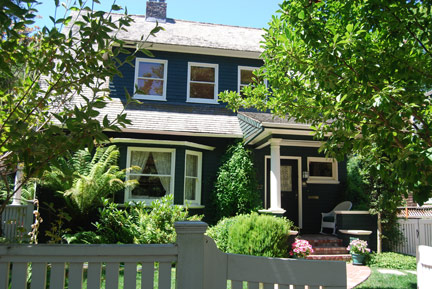 |
1022 Waverley Street | 1902 |
E-mail us at either webmaster@pastheritage.org or president@pastheritage.org.
![]() Palo Alto Stanford Heritage—Dedicated to the preservation of Palo Alto's historic buildings.
Palo Alto Stanford Heritage—Dedicated to the preservation of Palo Alto's historic buildings.
Copyright © 2016 Palo Alto Stanford Heritage. All rights reserved.